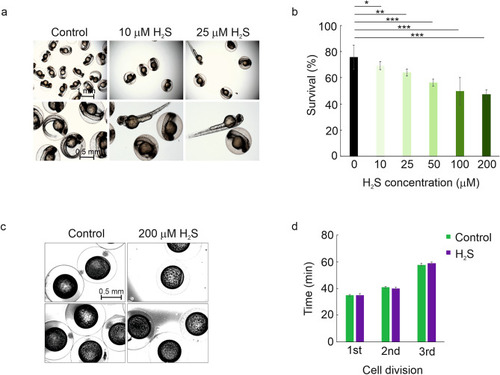Figure 2
- ID
- ZDB-FIG-201209-17
- Publication
- Terzioglu et al., 2020 - Improving CRISPR/Cas9 mutagenesis efficiency by delaying the early development of zebrafish embryos
- Other Figures
- All Figure Page
- Back to All Figure Page
|
The effect of H2S treatment on the early development of zebrafish embryos. ( |

